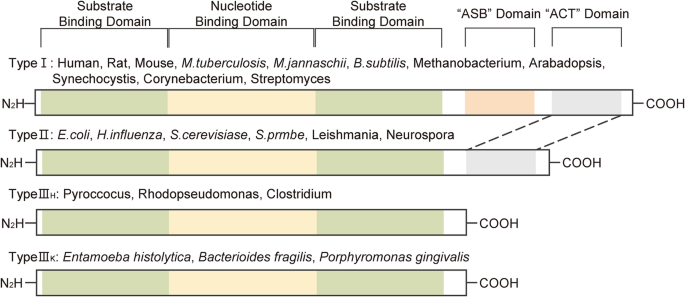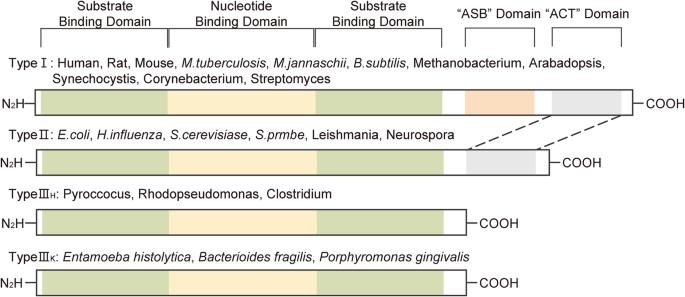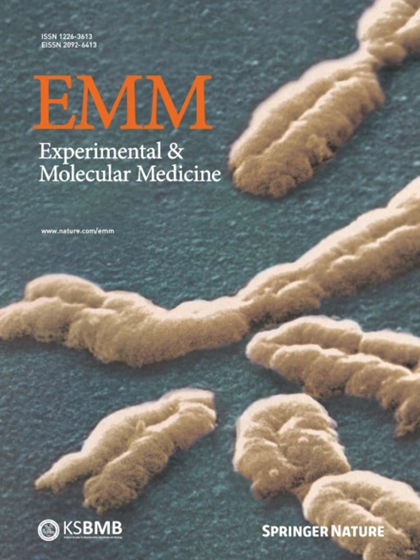PHGDH: a novel therapeutic target in cancer
IF 9.5
2区 医学
Q1 BIOCHEMISTRY & MOLECULAR BIOLOGY
引用次数: 0
Abstract
Serine is a key contributor to the generation of one-carbon units for DNA synthesis during cellular proliferation. In addition, it plays a crucial role in the production of antioxidants that prevent abnormal proliferation and stress in cancer cells. In recent studies, the relationship between cancer metabolism and the serine biosynthesis pathway has been highlighted. In this context, 3-phosphoglycerate dehydrogenase (PHGDH) is notable as a key enzyme that functions as the primary rate-limiting enzyme in the serine biosynthesis pathway, facilitating the conversion of 3-phosphoglycerate to 3-phosphohydroxypyruvate. Elevated PHGDH activity in diverse cancer cells is mediated through genetic amplification, posttranslational modification, increased transcription, and allosteric regulation. Ultimately, these characteristics allow PHGDH to not only influence the growth and progression of cancer but also play an important role in metastasis and drug resistance. Consequently, PHGDH has emerged as a crucial focal point in cancer research. In this review, the structural aspects of PHGDH and its involvement in one-carbon metabolism are investigated, and PHGDH is proposed as a potential therapeutic target in diverse cancers. By elucidating how PHGDH expression promotes cancer growth, the goal of this review is to provide insight into innovative treatment strategies. This paper aims to reveal how PHGDH inhibitors can overcome resistance mechanisms, contributing to the development of effective cancer treatments. Serine is important in DNA copying and cancer cell growth as it helps produce antioxidants and other substances. This detailed review explores the role of 3-phosphoglycerate dehydrogenase, an enzyme, in cancer, particularly its role in serine creation and its potential as a treatment target. The review combines results from different studies, using various experimental methods to understand how PHGDH affects cancer cell behavior and treatment responses. Researchers suggest that targeting PHGDH could be a promising strategy for cancer treatment, potentially improving outcomes for patients with tumors that overproduce PHGDH. The authors call for more research to fully understand PHGDH’s role in cancer and to develop effective inhibitors that could be used in clinical settings. This work advances our understanding of cancer metabolism and opens new possibilities for treatment. This summary was initially drafted using artificial intelligence, then revised and fact-checked by the author.


PHGDH:癌症的新型治疗靶点。
丝氨酸是细胞增殖过程中生成 DNA 合成所需的一碳单位的关键成分。此外,它还在抗氧化剂的生成过程中发挥着关键作用,而抗氧化剂能防止癌细胞的异常增殖和应激。最近的研究强调了癌症代谢与丝氨酸生物合成途径之间的关系。在这种情况下,3-磷酸甘油酸脱氢酶(PHGDH)作为丝氨酸生物合成途径中的主要限速酶,促进 3-磷酸甘油酸转化为 3-磷酸羟基丙酮酸,是一种值得注意的关键酶。不同癌细胞中 PHGDH 活性的升高是通过基因扩增、翻译后修饰、转录增加和异位调节等途径实现的。最终,这些特征使得 PHGDH 不仅能影响癌症的生长和进展,还能在转移和耐药性方面发挥重要作用。因此,PHGDH 已成为癌症研究的一个重要焦点。本综述研究了 PHGDH 的结构及其在一碳代谢中的参与,并提出 PHGDH 是多种癌症的潜在治疗靶点。通过阐明 PHGDH 的表达如何促进癌症生长,本综述旨在为创新治疗策略提供深入见解。本文旨在揭示 PHGDH 抑制剂如何克服抗药性机制,为开发有效的癌症治疗方法做出贡献。
本文章由计算机程序翻译,如有差异,请以英文原文为准。
求助全文
约1分钟内获得全文
求助全文
来源期刊

Experimental and Molecular Medicine
医学-生化与分子生物学
CiteScore
19.50
自引率
0.80%
发文量
166
审稿时长
3 months
期刊介绍:
Experimental & Molecular Medicine (EMM) stands as Korea's pioneering biochemistry journal, established in 1964 and rejuvenated in 1996 as an Open Access, fully peer-reviewed international journal. Dedicated to advancing translational research and showcasing recent breakthroughs in the biomedical realm, EMM invites submissions encompassing genetic, molecular, and cellular studies of human physiology and diseases. Emphasizing the correlation between experimental and translational research and enhanced clinical benefits, the journal actively encourages contributions employing specific molecular tools. Welcoming studies that bridge basic discoveries with clinical relevance, alongside articles demonstrating clear in vivo significance and novelty, Experimental & Molecular Medicine proudly serves as an open-access, online-only repository of cutting-edge medical research.
 求助内容:
求助内容: 应助结果提醒方式:
应助结果提醒方式:


